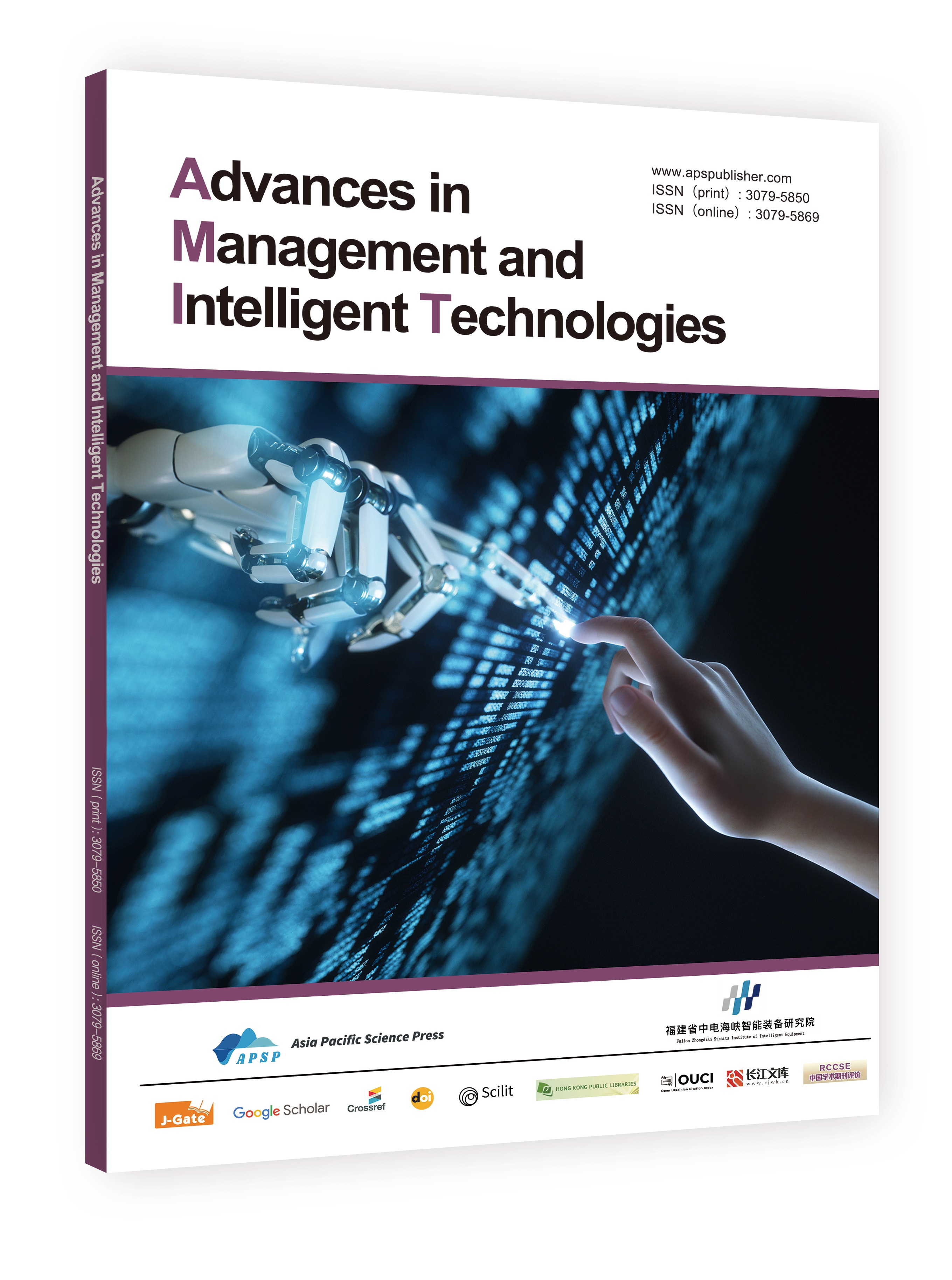Deep Reinforcement Learning with Graph Neural Networks for Financial Fraud Risk Mitigation
DOI:
https://doi.org/10.62177/amit.v1i1.201Keywords:
Graph Neural Networks, Deep Reinforcement Learning, Financial Fraud Detection, Risk Mitigation, Anomaly Detection, Adaptive Fraud PreventionAbstract
Financial fraud risk mitigation is a growing challenge as fraudsters continuously develop new tactics to evade detection. Traditional fraud prevention methods, including rule-based systems and supervised machine learning models, struggle to adapt to evolving fraud patterns, leading to high false positives and an increased risk of undetected fraudulent transactions. Recent advancements in graph neural networks (GNNs) have enabled fraud detection models to capture complex transactional relationships, allowing for the identification of hidden fraud networks. However, static GNN models remain limited in their ability to adapt to new fraud strategies in real-time.
This study proposes a deep reinforcement learning (DRL)-based fraud risk mitigation framework, integrating GNNs with adaptive decision-making policies. The GNN component models financial transactions as a heterogeneous graph, capturing multi-hop fraud pathways and high-risk account interactions. The DRL agent continuously optimizes fraud classification thresholds, ensuring that fraud detection strategies remain adaptive to emerging fraud tactics. The model is evaluated on large-scale financial transaction datasets, demonstrating higher fraud detection accuracy, lower false positive rates, and improved real-time adaptability compared to traditional fraud detection models. The results confirm that graph-based learning combined with DRL provides a scalable, intelligent solution for financial fraud risk mitigation.
Downloads
References
Innan N, Sawaika A, Dhor A, et al. Financial fraud detection using quantum graph neural networks[J]. Quantum Machine Intelligence, 2024, 6(1): 7.
Lee, Z., Wu, Y. C., & Wang, X. (2023, October). Automated Machine Learning in Waste Classification: A Revolutionary Approach to Efficiency and Accuracy. In Proceedings of the 2023 12th International Conference on Computing and Pattern Recognition (pp. 299-303).
Hiremath A C, Arya A, Sriranga L, et al. Ensemble of Graph Neural Networks for Enhanced Financial Fraud Detection[C]//2024 IEEE 9th International Conference for Convergence in Technology (I2CT). IEEE, 2024: 1-8.
Kesharwani A, Shukla P. FFDM− GNN: A Financial Fraud Detection Model using Graph Neural Network[C]//2024 International Conference on Computing, Sciences and Communications (ICCSC). IEEE, 2024: 1-6.
Wang, X., Wu, Y. C., & Ma, Z. (2024). Blockchain in the courtroom: exploring its evidentiary significance and procedural implications in US judicial processes. Frontiers in Blockchain, 7, 1306058.
Seera, M., Lim, C. P., Kumar, A., Dhamotharan, L., & Tan, K. H. (2024). An intelligent payment card fraud detection system. Annals of operations research, 334(1), 445-467.
Khare, K., Darekar, O., Gupta, P., & Attar, V. Z. (2017, May). Short term stock price prediction using deep learning. In 2017 2nd IEEE international conference on recent trends in electronics, information & communication technology (RTEICT) (pp. 482-486). IEEE.
Wang, X., Wu, Y. C., Zhou, M., & Fu, H. (2024). Beyond surveillance: privacy, ethics, and regulations in face recognition technology. Frontiers in big data, 7, 1337465.
Baesens, B., Höppner, S., & Verdonck, T. (2021). Data engineering for fraud detection. Decision Support Systems, 150, 113492.
Liu, Y., Wu, Y. C., Fu, H., Guo, W. Y., & Wang, X. (2023). Digital intervention in improving the outcomes of mental health among LGBTQ+ youth: a systematic review. Frontiers in psychology, 14, 1242928.
Mubalaike, A. M., & Adali, E. (2018, September). Deep learning approach for intelligent financial fraud detection system. In 2018 3rd International Conference on Computer Science and Engineering (UBMK) (pp. 598-603). IEEE.
Hajek, P., Abedin, M. Z., & Sivarajah, U. (2023). Fraud detection in mobile payment systems using an XGBoost-based framework. Information Systems Frontiers, 25(5), 1985-2003.
Li, X., Wang, X., Chen, X., Lu, Y., Fu, H., & Wu, Y. C. (2024). Unlabeled data selection for active learning in image classification. Scientific Reports, 14(1), 424.
Kalluri, K. (2022). Optimizing Financial Services Implementing Pega's Decisioning Capabilities for Fraud Detection. International Journal of Innovative Research in Engineering & Multidisciplinary Physical Sciences, 10(1), 1-9.
Sailusha, R., Gnaneswar, V., Ramesh, R., & Rao, G. R. (2020, May). Credit card fraud detection using machine learning. In 2020 4th international conference on intelligent computing and control systems (ICICCS) (pp. 1264-1270). IEEE.
Lakshmi, S. V. S. S., & Kavilla, S. D. (2018). Machine learning for credit card fraud detection system. International Journal of Applied Engineering Research, 13(24), 16819-16824.
Bin Sulaiman, R., Schetinin, V., & Sant, P. (2022). Review of machine learning approach on credit card fraud detection. Human-Centric Intelligent Systems, 2(1), 55-68.
Jain, Y., Tiwari, N., Dubey, S., & Jain, S. (2019). A comparative analysis of various credit card fraud detection techniques. International Journal of Recent Technology and Engineering, 7(5), 402-407.
Zanetti, M., Jamhour, E., Pellenz, M., Penna, M., Zambenedetti, V., & Chueiri, I. (2017). A tunable fraud detection system for advanced metering infrastructure using short-lived patterns. IEEE Transactions on Smart grid, 10(1), 830-840.
Ejiofor, O. E. (2023). A comprehensive framework for strengthening USA financial cybersecurity: integrating machine learning and AI in fraud detection systems. European Journal of Computer Science and Information Technology, 11(6), 62-83.
Carneiro, N., Figueira, G., & Costa, M. (2017). A data mining based system for credit-card fraud detection in e-tail. Decision Support Systems, 95, 91-101.
Cui, Y., Han, X., Chen, J., Zhang, X., Yang, J., & Zhang, X. (2025). FraudGNN-RL: A Graph Neural Network With Reinforcement Learning for Adaptive Financial Fraud Detection. IEEE Open Journal of the Computer Society.
Al-Hashedi, K. G., & Magalingam, P. (2021). Financial fraud detection applying data mining techniques: A comprehensive review from 2009 to 2019. Computer Science Review, 40, 100402.
Van Bekkum, M., & Borgesius, F. Z. (2021). Digital welfare fraud detection and the Dutch SyRI judgment. European Journal of Social Security, 23(4), 323-340.
Acevedo-Viloria J D, Roa L, Adeshina S, et al. Relational graph neural networks for fraud detection in a super-app environment[J]. arXiv preprint arXiv:2107.13673, 2021.
Guo, H., Ma, Z., Chen, X., Wang, X., Xu, J., & Zheng, Y. (2024). Generating artistic portraits from face photos with feature disentanglement and reconstruction. Electronics, 13(5), 955.
Alarfaj F K, Shahzadi S. Enhancing Fraud Detection in Banking with Deep Learning: Graph Neural Networks and Autoencoders for Real-Time Credit Card Fraud Prevention[J]. IEEE Access, 2024.
Liang, Y., Wang, X., Wu, Y. C., Fu, H., & Zhou, M. (2023). A study on blockchain sandwich attack strategies based on mechanism design game theory. Electronics, 12(21), 4417.
Zeager, M. F., Sridhar, A., Fogal, N., Adams, S., Brown, D. E., & Beling, P. A. (2017, April). Adversarial learning in credit card fraud detection. In 2017 Systems and Information Engineering Design Symposium (SIEDS) (pp. 112-116). IEEE.
Shah, J., Vaidya, D., & Shah, M. (2022). A comprehensive review on multiple hybrid deep learning approaches for stock prediction. Intelligent Systems with Applications, 16, 200111.
Nabipour, M., Nayyeri, P., Jabani, H., Mosavi, A., Salwana, E., & S, S. (2020). Deep learning for stock market prediction. Entropy, 22(8), 840.
Downloads
Issue
Section
License
Copyright (c) 2025 Wenjing Liu

This work is licensed under a Creative Commons Attribution-NonCommercial 4.0 International License.

















